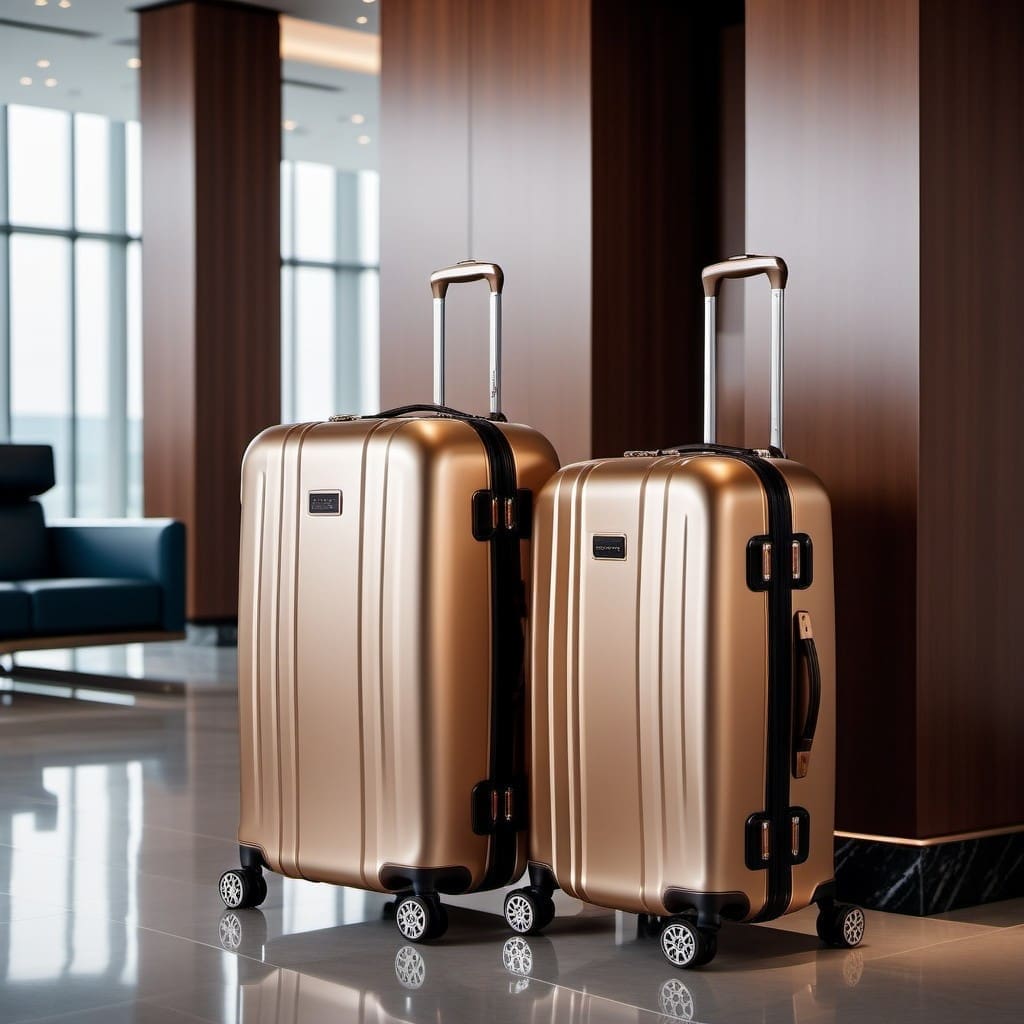As you zip up your luggage, envision a bottle of shampoo bursting open and soaking through your neatly folded clothes. To prevent such a travel nightmare, remember these essential tips for packing liquids in your checked bags.
Securely sealing containers is just the beginning – have you considered the implications of transporting prescription medications in your checked luggage? And what about those liquids that could spell disaster if spilled?
Stay tuned to learn how to navigate the complex world of liquid regulations for checked luggage and guarantee a stress-free journey.
Key Takeaways
- Use quart-sized clear bags for liquids over 3.4 ounces in checked luggage.
- Secure all liquid containers tightly to prevent leaks during travel.
- Avoid packing liquids that may potentially damage other items in your luggage.
- Keep prescription medications in your cabin baggage for easy access and safety.
Understanding the 3-3-1 Rule
To guarantee efficient security screening, familiarize yourself with the TSA’s 3-3-1 rule for liquids in carry-on luggage. This rule dictates that each liquid container must be 3.4 ounces or 100 milliliters, ensuring compliance with the 3-3-1 rule. When packing your carry-on bag, remember that all liquids must fit into a single quart-sized clear and resealable bag. The quart-sized bag is limited to only one per passenger, with a maximum capacity of 1 quart or approximately 946 milliliters.
Make sure your liquids, such as gels, aerosols, creams, and pastes, are in containers no larger than 3.4 ounces to adhere to the 3-3-1 rule. This regulation is essential for the security screening process and helps expedite your journey through the airport. By organizing your carry-on baggage according to the 3-3-1 rule, you can guarantee a smooth and hassle-free experience at the security checkpoint. Remember, it’s one bag of 3.4-ounce containers per passenger for a stress-free travel experience.
Exceptions to Liquid Regulations
Passengers can bring medically necessary liquids exceeding 3.4 ounces, baby formula, breast milk, and prescription medications as exceptions to the liquid regulations for both carry-on and checked luggage. These exceptions are essential for passengers who rely on these items for health or personal reasons. Here is a breakdown of the exceptions to liquid regulations:
| Exceptions | Description | Allowed in |
|---|---|---|
| Medically Necessary Liquids | Includes items like insulin, cough syrup, and other important medical liquids. | Carry-on & Checked |
| Baby Formula | Essential for infants and young children, exempt from the usual restrictions. | Carry-on & Checked |
| Breast Milk | Important for nursing mothers and exempt from the typical liquid limitations. | Carry-on & Checked |
| Prescription Medications | Necessary medications that passengers must have with them during the flight, allowed in larger quantities. | Carry-on & Checked |
Understanding these exceptions can make your travel experience smoother, ensuring you have what you need while complying with security regulations.
Packing Frozen Liquids
When considering packing frozen liquids for your trip, be mindful of specific guidelines to guarantee compliance with TSA regulations. Frozen liquids in checked baggage must adhere to certain rules to make sure compliance with a smooth airport security experience:
- Limit Quantity: Frozen liquids in checked baggage are subject to the same regulations as carry-on bags, with each container limited to 3.4 ounces.
- Consistency Matters: If your frozen items have a slushy consistency or are partially melted, they may be treated as liquids by the TSA.
- Use Leak-Proof Containers: To prevent spills and security concerns, it’s advisable to pack your frozen liquids in leak-proof containers.
- Solid When Frozen: Even if your liquids are solid when frozen, they must still comply with the 3.4-ounce limit for each container.
Maximizing Liquid Ounce Allowance
Maximizing your liquid ounce allowance involves strategic packing and secure sealing of all containers to prevent leaks during transit. When traveling, making the most of the space you have for liquids in your checked luggage is crucial.
To optimize your allowance, consider transferring liquids into smaller containers if possible. This not only saves space but also allows you to bring a variety of items within the limits. Additionally, be mindful of the types of liquids you pack. Avoid carrying items that could potentially damage your clothing or other belongings in case of a spill.
It’s recommended to double-bag any liquids that have the potential to leak to prevent any accidents. By being strategic in your packing and ensuring all containers are tightly sealed, you can make the most of the ounces permitted for liquids in your checked bags while ensuring a hassle-free travel experience.
Guidelines for Liquids in Checked Bags
To guarantee smooth travel with your liquids in checked bags, understanding the guidelines for packing them securely is vital. When it comes to liquids in checked luggage, there are specific rules to follow for a hassle-free journey:
- Use Quart Bag: All liquids larger than 3.4 ounces (100 milliliters) or less per container must be placed in a quart-sized clear plastic bag.
- Securely Packed: Make sure that all liquid containers are tightly sealed to prevent any leaks during transit.
- Avoid Damage: Be mindful of packing liquids that could potentially damage clothing or other items in case of spills.
- Prescription Medications: Remember that prescription medications should always be kept in your cabin baggage rather than in checked luggage.
Adhering to these guidelines will help you navigate the regulations surrounding liquids in checked bags and ensure a smoother experience during air travel. Stay informed and pack your liquids thoughtfully to avoid any issues along the way.
Conclusion
So there you have it, remember to follow these three key tips when packing liquids in your checked luggage.
By understanding the 3-3-1 rule, keeping exceptions in mind, and properly packing frozen liquids, you can maximize your liquid ounce allowance and guarantee a smooth travel experience.
Remember, it’s better to be safe than sorry when it comes to liquids in your checked bags.
Happy travels and smooth sailing!














